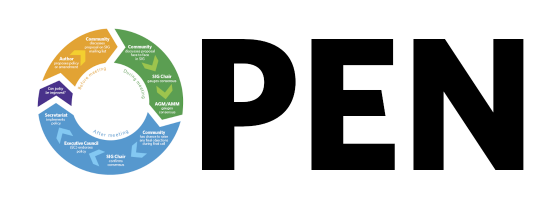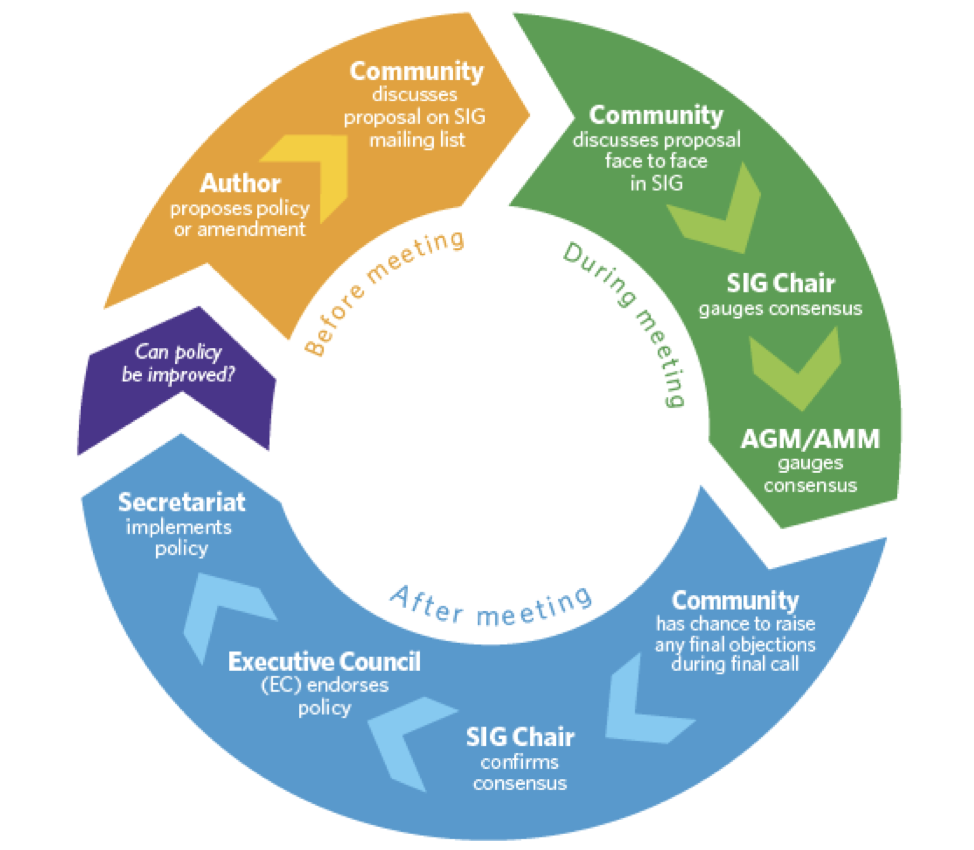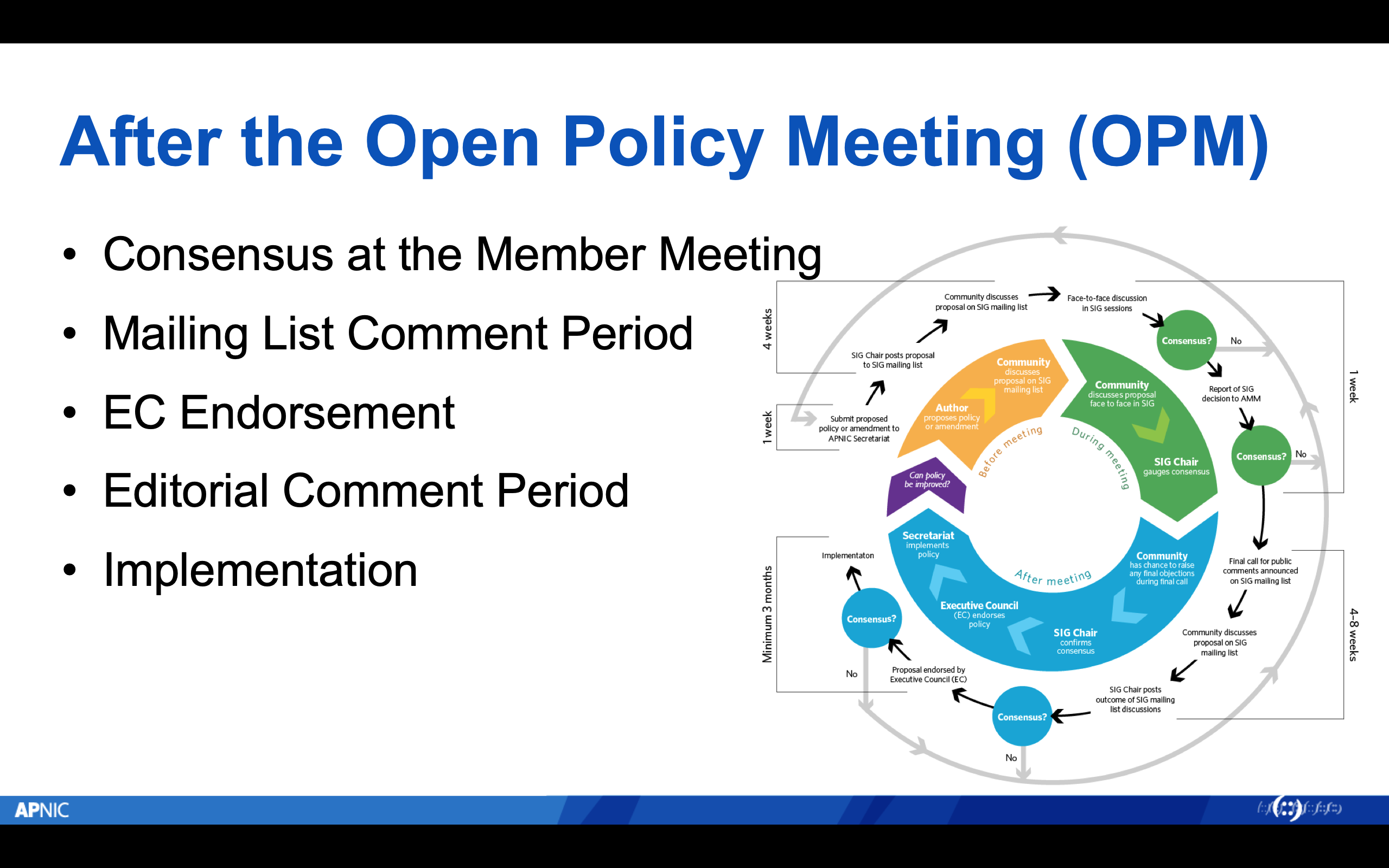
There are a lot of moving parts and cooperation required to make the Internet operate successfully. Starting with the technical aspects, everyone must first agree to use the same network layer protocol (IP) in a more or less predictable manner, and the same requirement for agreement goes for routing protocols (BGP), name resolution (DNS), not even mentioning the Web and other forms of data transfer.
But what about the Internet number resources required to use these protocols — IP addresses and AS numbers — and who delegates the authority to manage these resources? Well, if your answer is “APNIC and other RIRs” you’d be half right. While the RIRs are responsible for resource delegation and associated record-keeping, the way that they execute these responsibilities is determined by Policy — and Policy is developed by you, the Internet community.
Anyone can participate in the APNIC Policy Development Process (PDP); there is no membership, job title, or level of experience required. The APNIC Secretariat’s role in the PDP is to provide support to authors and the Policy Special Interest Group (Policy SIG), manage the implementation of policy changes, and inform the community of those changes.
Policies continue to change — they evolve in response to changes in the availability of resources, or to the needs of the technical community.
Good policy relies on a range of opinions from people in different parts of the community, so it is important to get involved. Policies are developed through an open, transparent and bottom-up process of consultation and consensus.

Figure 1 — The APNIC Policy Development Process.
Because of the nature of this process, as a member of the Asia Pacific Internet community, you can have a direct impact on the way APNIC manages Internet number resources, ensuring that these policies work for your network or organization.
So how do you participate?
One way to get involved straight away is to subscribe to the Policy SIG mailing list, where a lot of the discussion on the development of policy takes place. The mailing list also serves to provide public transparency for the PDP.
You can attend a Policy SIG meeting at an APNIC conference, in person or remotely. The next meeting is APNIC 48 in Chiang Mai, Thailand. At a Policy SIG meeting, authors present their proposals and then the floor is opened to anyone with questions, expressions of support or concern, or any other feedback (either in-person or remotely).
SIG Chairs then decide whether consensus has been reached by considering many sources, such as mailing list discussions, feedback at the SIG session, and a show of hands (as a broad gauge of opinion — hands are not counted). Determining consensus among remote participants is assisted by the CONFER tool.

Figure 2 — Determining consensus at a Policy SIG meeting.
If a proposal does reach consensus at a Policy SIG meeting (also known as the Open Policy Meeting), it’s only the beginning. The proposal also needs to reach consensus at the Member Meeting before going through a comment period and gaining endorsement from the APNIC Executive Council, as shown below.

Figure 3 — The course of a proposal after the Open Policy Meeting.
If you can’t wait for APNIC 48, another way to get started right now is to review the current proposals.
APNIC’s Sunny Chendi will be introducing attendees of SANOG 34 to the APNIC PDP in a special BoF session on day two of the meeting. The BoF will include a mock Policy SIG, where attendees can experience what it’s like to be involved in the PDP first-hand.
Vivek Nigam and Tashi Phuntso will also be at the SANOG meeting, presenting ‘Internet Number Resources – The Next Generation’, and ‘Securing Internet Routing’, respectively. Tashi will also co-instruct the Routing Security workshop, while Philip Smith and Community Trainer, Zobair Khan, will instruct the Introduction to Routing workshop.
SANOG 34 takes place from 31 July to August 7 in Kolkata, India. For more information, see the SANOG website.
Contributor: Sunny Chendi.
The views expressed by the authors of this blog are their own and do not necessarily reflect the views of APNIC. Please note a Code of Conduct applies to this blog.
